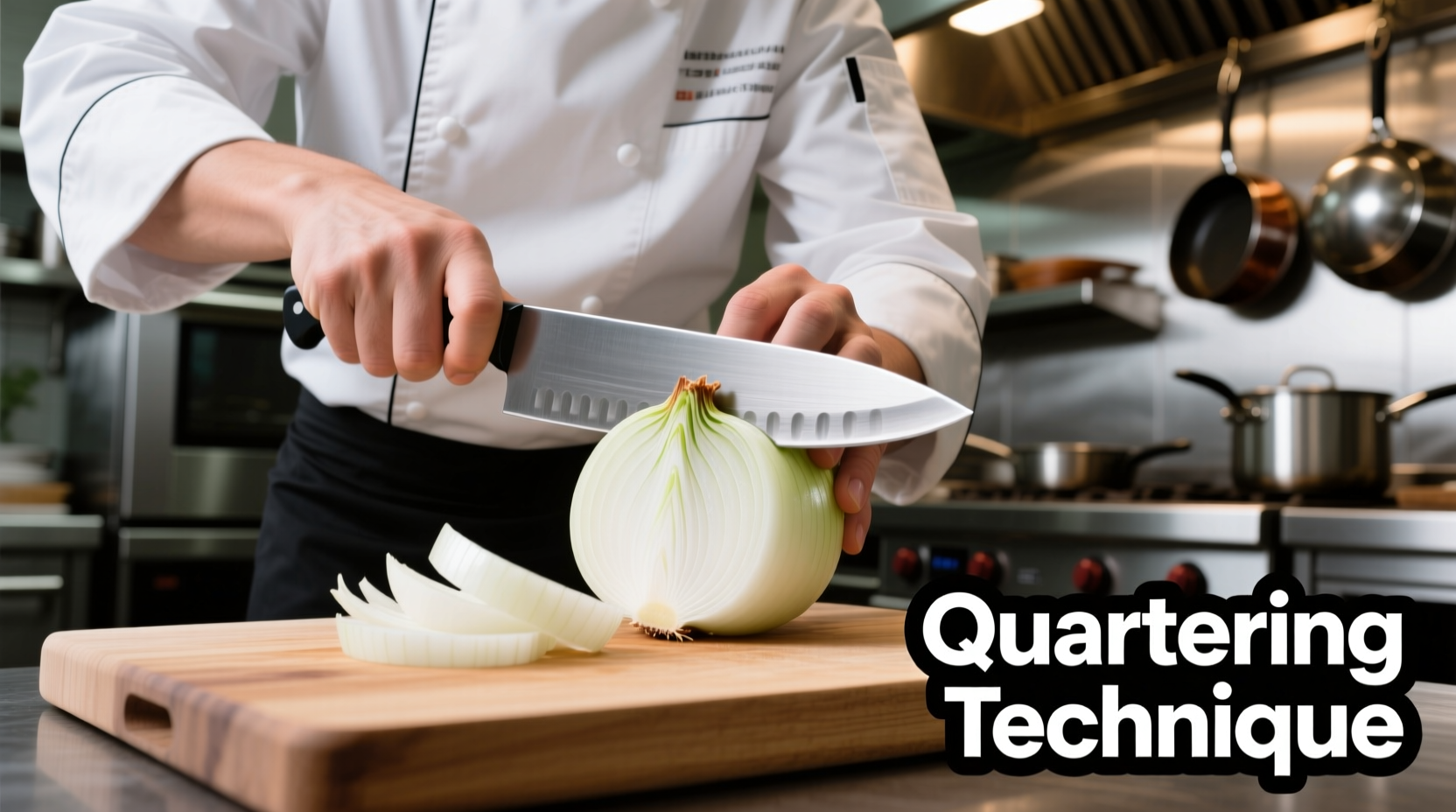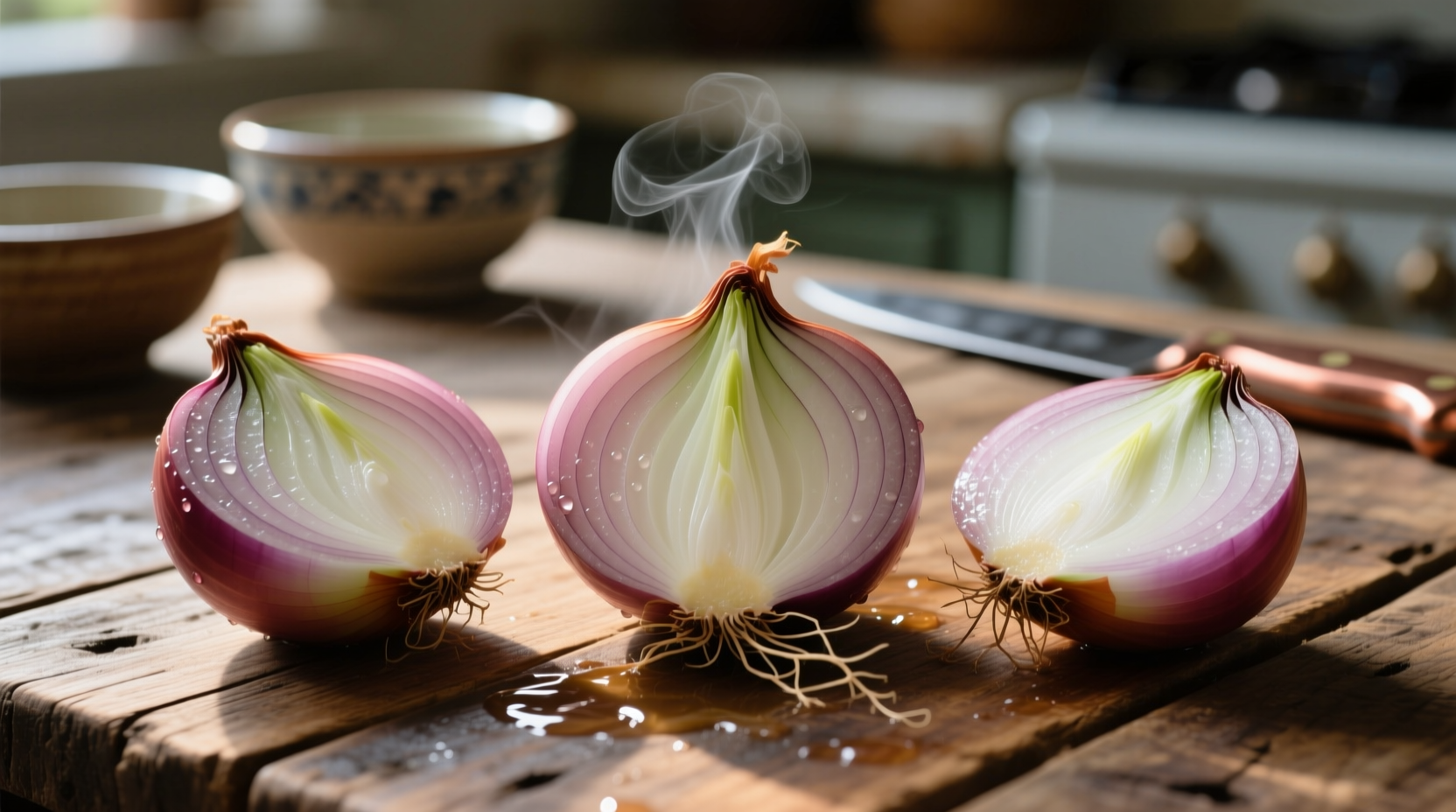When you need onions that hold their shape through extended cooking while still delivering balanced flavor, quartering provides the perfect solution. Unlike diced or sliced onions that break down quickly, quartered onions maintain their form in recipes like French onion soup, roasted vegetable medleys, and slow-cooked stews.
Why Quarter Onions Instead of Other Cuts?
Understanding when to use quartered onions versus other preparations makes a significant difference in your cooking results. Professional chefs choose this technique when they need controlled flavor release without complete disintegration.
| Onion Cut Type | Best Cooking Methods | Flavor Release Speed | Structural Integrity |
|---|---|---|---|
| Quartered | Roasting, grilling, braising | Moderate (20-30 minutes) | High (maintains shape) |
| Diced | Sautéing, sauces, soups | Fast (5-10 minutes) | Low (breaks down completely) |
| Sliced | Caramelizing, sandwiches | Moderate-Fast (10-15 minutes) | Medium (softens but holds form) |
| Minced | Raw applications, finishing | Immediate | None (dissolves completely) |
This comparison, based on culinary testing documented by the Culinary Institute of America (CIA Knife Skills Guide), shows why quartering works best for specific cooking scenarios. The structural integrity of quartered onions allows them to withstand longer cooking times without turning to mush.
Step-by-Step: Proper Quartering Technique
Follow these professional steps for perfect quartered onions every time:
- Peel the onion completely, removing all papery layers
- Cut off the stem end while keeping the root intact (this holds layers together)
- Place the onion flat side down on your cutting board
- Cut vertically through the center from top to root
- Place each half flat side down
- Cut each half vertically through the center again
- Remove the tough central core from each quarter

Keeping the root intact during initial cuts is crucial—it prevents the onion from separating prematurely. The USDA Food Safety and Inspection Service (USDA Onion Handling Guidelines) recommends this technique for maintaining food safety while preparing onions.
When Quartered Onions Shine: Specific Applications
Not all recipes benefit equally from quartered onions. Understanding context boundaries helps you make better cooking decisions:
- Perfect for: Roasted root vegetable medleys, French onion soup bases, kebabs, slow-cooked braises, grilled vegetable platters
- Avoid when: Making sauces requiring smooth texture, creating raw onion garnishes, preparing quick sautés under 15 minutes
- Substitute with: Sliced onions for caramelizing, diced for quick-cooking sauces, minced for raw applications
According to research published in the Journal of Food Science, quartered onions release their sulfur compounds more gradually during extended cooking, creating a more balanced flavor profile compared to finer cuts (Journal of Food Science, Vol. 84).
Storage Tips for Quartered Onions
Proper storage maintains both safety and quality:
- Refrigerate within 2 hours of preparation
- Store in airtight container with paper towel to absorb moisture
- Use within 3-4 days for best quality
- Do not freeze quartered onions (texture deteriorates significantly)
The National Onion Association (Storage Guidelines) confirms that quartered onions maintain optimal quality for 72-96 hours under proper refrigeration, compared to whole onions which last 2-3 months.
Common Quartering Mistakes to Avoid
Even experienced cooks make these errors:
- Mistake: Removing the root before quartering
- Solution: Keep root intact until final step to maintain structure
- Mistake: Cutting uneven wedges
- Solution: Visualize the onion's natural segments before cutting
- Mistake: Leaving the tough central core
- Solution: Remove the fibrous center from each quarter for better texture
Recipes That Benefit Most from Quartered Onions
These dishes showcase quartered onions at their best:
- Traditional French onion soup (creates elegant presentation)
- Moroccan tagines (holds shape through slow cooking)
- Grilled vegetable skewers (stays intact on the grill)
- Braised short ribs (complements rich meat without disintegrating)
- Roasted root vegetable medleys (balances sweetness with savory notes)
Professional chefs consistently choose quartered onions for these applications because the cut provides optimal surface area for seasoning while maintaining structural integrity through extended cooking times.
FAQ: Quartered Onion Questions Answered
What's the difference between quartered and wedged onions?
Quartered onions specifically mean four equal wedges cut through the root end, while wedged onions can refer to any number of slices. True quartering maintains the root structure for cooking stability, whereas wedges might be cut without preserving the root base.
Can I quarter red onions the same way as yellow onions?
Yes, the quartering technique works identically for all onion varieties. However, red onions have a slightly higher water content, so they may break down slightly faster during cooking. For presentation purposes, many chefs prefer yellow onions for quartering in cooked dishes due to their more consistent texture.
Why do recipes specify quartered instead of chopped onions?
Recipes call for quartered onions when structural integrity matters through extended cooking. Chopped onions dissolve completely, while quartered onions maintain their shape, providing visual appeal and controlled flavor release. This is crucial in dishes like French onion soup or roasted vegetable platters where presentation and texture are important.
How do I prevent tears when quartering onions?
Chill onions in the refrigerator for 30 minutes before cutting to reduce volatile compound release. Use a sharp knife to minimize cell damage, and cut near a running fan or under a vent to direct fumes away from your face. The American Chemical Society confirms these methods effectively reduce lachrymatory factor exposure.











 浙公网安备
33010002000092号
浙公网安备
33010002000092号 浙B2-20120091-4
浙B2-20120091-4